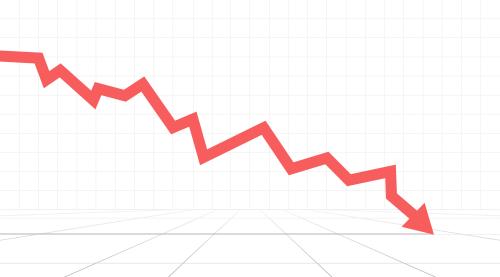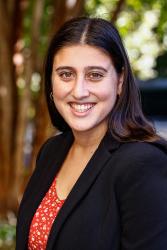This blog is based on a paper published on January 11, 2022.
A major finding of our new work is that more than half of the income generated by closely held businesses (that is, businesses other than corporations) is untaxed. This discrepancy between earned and taxed income is due to some combination of tax rules, taxpayer avoidance strategies, and outright evasion of liabilities. A pure income tax would subject all forms of income to taxation. That conceptual ideal, of course, does not apply to the United States revenue system. Nonetheless, it would be useful to understand better why so much business income is untaxed and what the revenue and distributional effects of taxing that income would be.
We show that Survey of Consumer Finances (SCF) business owners report incomes that are substantially higher than the totals reported to the IRS and nearly the same as income from businesses as estimated in the National Income and Product Accounts (NIPA), which is more than double the published IRS figures. Our working hypothesis is that SCF respondents are providing information about how much their businesses actually earned, whereas taxpayers are reporting a tax-based definition of income to the IRS that can include substantial losses for tax purposes, even for a business that generates profits for its owners. Given the hypothesis, we ask “what if we could tax that income?”
To address this question, we use data from the SCF and programs we have developed to simulate income tax liabilities using SCF data. Most recently conducted in 2019, the SCF is a triennial household survey with extensive demographic, income, and balance sheet information for the designated survey respondent and the respondent’s spouse/partner, if any. The survey also collects basic demographic information, financial dependency indicators, and summary income measures for up to ten additional household members. The SCF is unique among public-use household surveys because it oversamples wealthy households and is thus suitable for studying trends in top wealth and income shares (Bhutta et al. 2020; Bricker et al. 2016). Like most household surveys, however, the SCF does not ask detailed questions about household tax filing or tax liabilities.
Our overall strategy is to divide SCF households into tax units, align survey and taxable incomes concepts, create the other necessary inputs for estimating income tax liabilities, and then estimate income tax liabilities for SCF tax unit micro files in conjunction with the most recent version of NBER’s on-line tax calculator TAXSIM. TAXSIM replicates U.S. federal income tax rules over time, including the 1995 to 2019 period (tax years 1994 to 2018) spanned by the SCF micro data files that we use.
We first reduce by half the business income reported by each business owner with positive income in the SCF and show that the total business incomes (across years) and the distribution of Adjusted Gross Income (AGI) (in a given year) align well with published IRS tables. Cutting each business owner’s positive business income in half is meant to be a simple way to approximate the fact that only about half of all closely held business income in the NIPA shows up on tax forms. More complicated alternatives would involve simulating business losses for a subset of business owners that might be correlated with business income or business wealth. Our approach understates the revenue and distributional effects of taxing all income if wealthier business owners are more likely to avail themselves of loss-generating business accounting practices.
A simple test of the premise that the counterfactual is a more accurate representation of what business owners report to the IRS involves looking at aggregate tax liabilities over time (Figure 1). Not unexpectedly, the unadjusted SCF+TAXSIM simulation (the solid red line) produces aggregate taxes that are well above published SOI values (the black line). The unadjusted SCF+TAXSIM baseline has higher total income, most of which is accounted for by higher business incomes. Moreover, the gaps between SCF+TAXSIM and SOI tax liabilities are relatively stable over time, which is consistent with a systematic reporting difference.
The key insight from the counterfactual exercise is that cutting business income by 50 percent offsetting brings the SCF+TAXSIM aggregate tax liabilities (the red dotted line) into much closer alignment with published SOI. The SCF is a relatively small sample, and sampling variability within the wealth-oversample affects any given year, so some volatility is expected. Still, the overwhelming impression from Figure 1 is that the reduced business income simulation aligns well with published SOI over our sample period. In our research, we also show that the distribution of AGI in the SCF comes into much better alignment with published IRS after we introduce the 50 percent business offset.

A limitation of SOI data is that it does not contain the distribution of income and wealth. However, SCF data provides this, allowing us to analyze the distributional impacts of business losses using our two simulations. The 50 percent business loss counterfactual aligns with our current tax system, while our baseline SCF simulation is in line with what business taxes might look like without manufactured losses. Table 1 shows us that the distributional effects are stark.
In the unadjusted SCF+TAXSIM simulation, households with wealth of $10 million or more account for 30.3 percent of taxes. In the counterfactual 50 percent business loss offset simulation, which is arguably much closer to our actual tax system, those same households account for only 27.6 percent of taxes. If we were to move from the income tax system we have (as captured by the SCF+TAXSIM counterfactual) to the tax system we might have if business incomes were taxed more effectively (the unadjusted SCF+TAXSIM baseline), average tax liability would jump from $287,830 to $367,145 (a 28 percent increase) for families with $10 million or more in wealth. Given that simulated tax liabilities do not change much for households with a net worth of less than $1 million, taxing business incomes more effectively may be the key to more effectively taxing the wealthy.
Finding a way to tax what business owners effectively earned, as opposed to the measures of income reported to the IRS, has first-order revenue and distributional implications. Namely, it may be the key to more effectively taxing the wealthy, an idea that is garnering significant attention on the national policy stage.
The Brookings Institution is financed through the support of a diverse array of foundations, corporations, governments, individuals, as well as an endowment. A list of donors can be found in our annual reports published online here. The findings, interpretations, and conclusions in this report are solely those of its author(s) and are not influenced by any donation.









Commentary
Revenue and distributional effects of untaxed business income
December 21, 2021